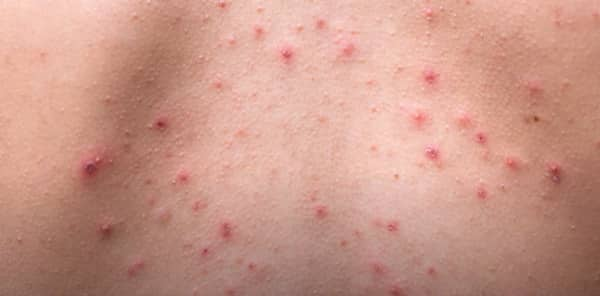Inconvenient and often unsightly, bacne (back acne) is a common skin issue. Pimples, blackheads, and whiteheads grow when oil, dead skin, and germs accumulate in the hair follicles. Since the skin on the back is thicker and more durable than the skin on the face, and because it may be difficult to reach some places to administer topical therapies, bacne can be especially challenging to treat. Fortunately, there are a number of approaches that may be used to control and even eliminate acne.
Loose clothes, frequent washing, the use of non-comedogenic body washes and moisturizers, and refraining from picking at breakouts are all useful methods for reducing the risk of permanent scarring. A dermatologist may prescribe oral drugs or in-office procedures like chemical peels or laser therapy for more severe instances.
Causes of Acne on the Back
There are several factors that can contribute to the development of acne on the back.
- Hormonal changes, such as those that occur during puberty, pregnancy, or menstruation, can increase the production of oil in the skin and lead to breakouts.
- Certain medications, such as steroids or lithium, can also trigger acne.
- In addition, lifestyle factors like stress, a poor diet, and a lack of sleep can contribute to the development of acne on the back.
Understanding the underlying causes of acne can help individuals take proactive steps to prevent and manage this common skin condition.
Symptoms
Acne on the back may manifest in a number of ways, but the most common ones are blackheads, whiteheads, pimples, and cysts. Untreated, these flaws may become unpleasant, itchy, and perhaps scarred or discolored. Acne on the back is more vulnerable to scarring if the affected area is picked at or squeezed. Consultation with a dermatologist for individualized care is advised if OTC remedies fail to alleviate symptoms.
In addition, taking a shower after exercise and wearing loose clothes might aid in the fight against back acne. It may take many weeks or months of therapy before any noticeable improvement is seen.
An increase in perspiration and friction, for instance, might make a young athlete more susceptible to acne if they wear close-fitting sports gear on a regular basis. To avoid this, they might take a shower right after their workout and dress in loose, breathable clothes. A dermatologist visit may be warranted if the acne does not respond to over-the-counter remedies or other non-invasive methods.
Treatment Options
A variety of techniques may be used to treat back acne. The typical remedies include behavioral changes, oral medications, and topical treatments. Topical therapies, which are applied directly to the skin, may include substances like benzoyl peroxide, salicylic acid, and retinoids. Your dermatologist could give you a prescription for an oral medication, such accutane or an antibiotic, that you just swallow whole.
[azonpress template=”list” asin=”B01FX1FAH8,B091H4YMKK,B093VTD9C2,B07KPPCS3T,B09CVZMWP5″]
Acne on the back may be avoided by making a few changes to one’s lifestyle, such as switching to a more breathable fabric or ditching the tight backpack. If you suffer from back acne, it’s advisable to see a dermatologist to figure out the best course of action. You may effectively cure and significantly lessen your back acne with time and effort.
In addition, maintaining good hygiene habits such as showering after sweating and using gentle, non-comedogenic products on the back can also aid in preventing and managing back acne. It’s important to be consistent with these habits and treatments to see improvement in your skin.
Prevention
Acne on the back may be difficult to cure; therefore, prevention is essential. Loose, breathable clothes, washing after sweating or exercising, avoiding harsh soaps and scrubs, and using non-comedogenic (non-pore-clogging) moisturizers and sunscreens are all good ways to reduce the risk of back acne. Acne prevention and general skin health are both aided by a balanced diet and stress management. If you suffer from back acne, implementing preventative and curative measures can do wonders for your self-esteem.
If you tend to perspire significantly when exercising or engaging in other outdoor activities, for instance, you may want to carry a change of clothes and take a shower as soon as possible afterward. In addition, switching to a mild, fragrance-free laundry detergent or fabric softener may alleviate discomfort and inflammation on the back if you often use a product with a strong aroma.
About the Author
Reyus Mammadli is the author of this health blog since 2008. With a background in medical and biotechnical devices, he has over 15 years of experience working with medical literature and expert guidelines from WHO, CDC, Mayo Clinic, and others. His goal is to present clear, accurate health information for everyday readers — not as a substitute for medical advice.







